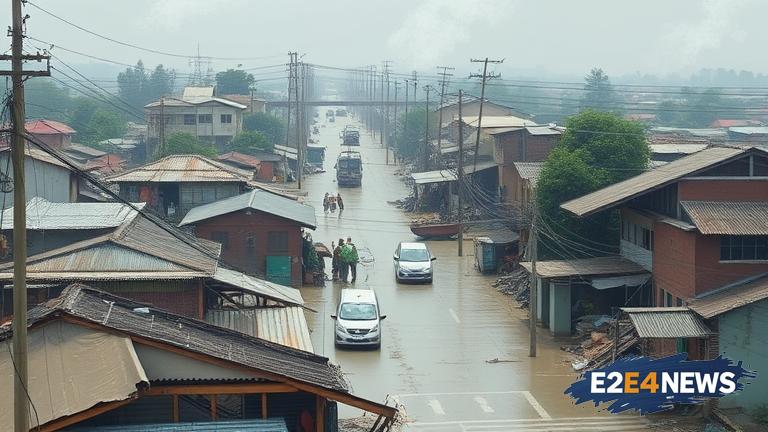South Asia, comprising countries such as India, Pakistan, Bangladesh, and Nepal, is highly vulnerable to climate-related disasters. The region has witnessed a significant increase in frequent disasters, including floods, droughts, heatwaves, and cyclones, which have exposed the climate risks to its infrastructure. The consequences of these disasters have been devastating, resulting in loss of life, displacement of people, and damage to infrastructure, including roads, bridges, and buildings. The region’s infrastructure is not equipped to withstand the impacts of climate change, and the frequent disasters have highlighted the need for urgent action to mitigate and adapt to these changes. Climate change is projected to increase the frequency and severity of extreme weather events, which will further exacerbate the climate risks to South Asia’s infrastructure. The region’s governments, policymakers, and stakeholders must work together to develop and implement strategies to mitigate and adapt to climate change. This includes investing in climate-resilient infrastructure, implementing early warning systems, and promoting sustainable land use practices. The private sector also has a critical role to play in supporting climate action in South Asia, through investments in renewable energy, climate-resilient infrastructure, and climate-smart technologies. Furthermore, international cooperation and support are essential to help South Asia address the climate risks to its infrastructure. The region’s countries must also prioritize climate change adaptation and mitigation in their national development plans and policies. In addition, there is a need to enhance the capacity of local communities to adapt to climate change, through climate information services, climate-smart agriculture, and climate-resilient water management practices. The media also has a critical role to play in raising awareness about climate change and its impacts on South Asia’s infrastructure. Moreover, the region’s countries must also address the issue of climate migration, which is becoming a significant concern due to the increasing frequency and severity of climate-related disasters. Climate migration can have significant social, economic, and environmental implications, and it is essential to develop strategies to address this issue. The region’s countries must also prioritize climate justice, ensuring that the most vulnerable communities are protected and supported in the face of climate change. In conclusion, South Asia’s infrastructure is facing significant climate risks due to frequent disasters, and urgent action is needed to mitigate and adapt to these changes. The region’s governments, policymakers, stakeholders, and international community must work together to support climate action in South Asia, and prioritize climate change adaptation and mitigation in national development plans and policies. By taking collective action, South Asia can reduce the climate risks to its infrastructure, and ensure a more sustainable and resilient future for its people. The region’s countries must also learn from each other’s experiences and best practices in addressing climate change, and share knowledge and expertise to support climate action. Moreover, the region’s countries must also address the issue of climate finance, which is essential to support climate action in South Asia. Climate finance can help support the development of climate-resilient infrastructure, and promote sustainable land use practices. In addition, the region’s countries must also prioritize climate education and awareness, to ensure that people are aware of the climate risks and take action to mitigate and adapt to these changes. Overall, addressing the climate risks to South Asia’s infrastructure requires a collective and coordinated effort from all stakeholders, including governments, policymakers, private sector, and international community.





